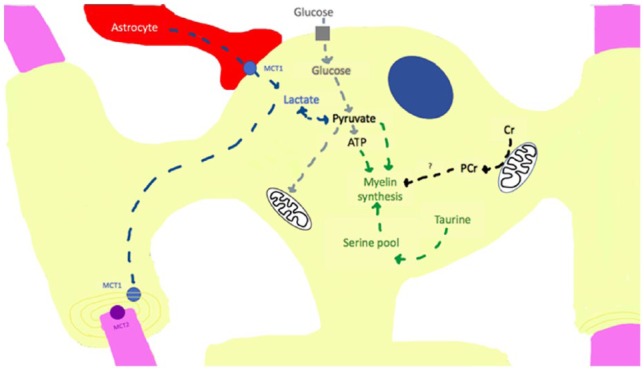Figure 1.
Mechanisms of energy metabolism in the myelinating oligodendrocyte (yellow). Lactate is taken up through the monocarboxylate transporter 1 (MCT1) from contact with astrocytes (red). Lactate can then be shuttled to and taken up by axons (pink) through the MCT2 on neurons. Conversely, lactate can be converted to pyruvate and transported to the mitochondria for the tricarboxylic acid (TCA) cycle or converted to ATP in the cytosol by glycolysis. Glucose can also be transported into oligodendrocytes by glucose transporters and converted to pyruvate. Small metabolites, creatine and taurine, contribute to oligodendrocyte stability. Creatine (Cr) is converted to phosphocreatine (PCr) and serves as a phosphate pool in the cytosol to aid in ATP production and promote cell survival. PCr may serve as energy source for myelin synthesis. Taurine increases serine pools to stimulate myelin synthesis within the cell.

